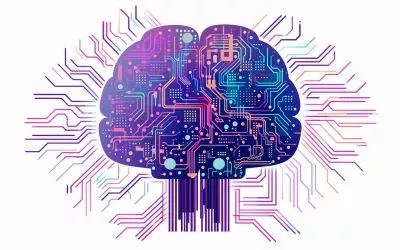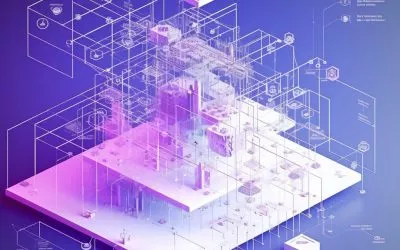BabyAGI and Auto-GPT, has captured the imagination of many, sparking debates about whether these agents have achieved Artificial General Intelligence (AGI) or remain as mere next-word predictors. Powered by OpenAI’s recent GPT-4 release, these agents are built on top of large language models (LLMs) and boast a range of capabilities. This article aims to separate fact from science fiction, providing insights into the current state of AGI and its implications for businesses.
Unraveling Autonomous Agents: BabyAGI and Auto-GPT
BabyAGI and Auto-GPT represent a new generation of autonomous agent frameworks, setting them apart from traditional AI systems. Their ability to learn and adapt independently makes them more versatile and efficient. These agents are built on top of LLMs, which are next-word predictors that have evolved to possess advanced capabilities like conducting web searches, interacting with APIs, researching, and compiling information on a given topic. Recent advancements in language processing and decision-making have thrust these agents into the AI research spotlight, but how close are they to achieving AGI?
The Current State of AGI: Capabilities, Limitations, and Potential Applications
Artificial General Intelligence aspires to reach human-level cognitive abilities, enabling it to learn and perform any intellectual task that humans or other animals can achieve. Attaining AGI has long been a goal in the field of AI; however, progress has been hindered by factors such as conceptual limitations, insufficient data, memory, and processing power, and the need to fully comprehend the human brain.
The role of consciousness in AGI remains a topic of debate, with the development of language models like GPT-3 and GPT-4 sparking discussions on whether they represent early AGI incarnations. Despite recent advancements in autonomous agents’ language processing and decision-making capabilities, there are still hurdles to overcome before AGI can be fully realized.
AGI’s Impact on Industries and Businesses
The potential influence of AGI on industries and businesses is immense, with AI predicted to contribute an additional $13 trillion to global economic activity by 2030. However, AI adoption could also exacerbate existing disparities between countries, companies, and workers. The benefits of AI are likely to be unevenly distributed, necessitating that businesses adapt and invest in resources to leverage AI’s potential.
Ethical considerations surrounding AGI’s development and use are essential to ensuring responsible advancement and implementation of AI technology. Issues such as privacy, data protection, transparency, bias, discrimination, safety, and the digital divide must be addressed as technology progresses.

Looking Ahead: Future AGI Developments and Implications for Businesses
As AGI technology evolves, businesses must brace for the rapidly changing AGI landscape. Potential future developments could act as catalysts propelling AGI toward human-like capabilities.
Companies should monitor AGI advancements, collaborate with startups, and invest in combined human-machine interfaces to augment human intelligence. In the medium term, mastering object recognition, language understanding, and multi-modality can help address specific use cases.
As AGI systems grow more powerful, caution must be exercised in their creation and deployment. Balancing the upsides and downsides of AGI deployments could necessitate significant changes in plans for continuous deployment. Open and honest discussions about AGI’s goals and potential risks are vital to maximizing benefits while minimizing harm.
Conclusion
In conclusion, while autonomous agents like BabyAGI and Auto-GPT have made remarkable progress in language processing and decision-making, they have not yet achieved true AGI. Grasping the current state of AGI and its implications for businesses and society is crucial as technology continues to advance. The ongoing development and potential of AGI technology must be carefully assessed, with businesses and researchers collaborating to ensure responsible growth and application. By distinguishing fact from fiction, we can better navigate the evolving landscape of AGI and harness its potential to revolutionize industries, boost productivity, and foster a more sustainable future. With a deeper understanding of autonomous agents like BabyAGI and Auto-GPT, we can appreciate the impressive strides made by these agents while remaining realistic about their current capabilities and limitations in the quest for true AGI.





